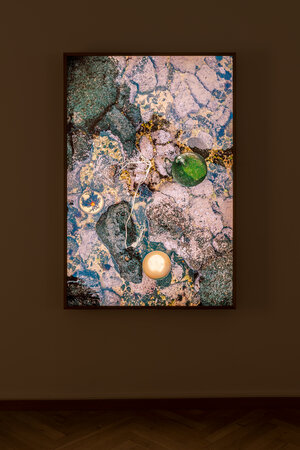︎︎︎ The Pull of the Moon
Jane Jin Kaisen & Guston Sondin-Kung (2019), Lightboxes
![]()
![]()


The motifs seen on the light boxes hail from Jeju Island, dominated by the volcano Hallasan, South Korea’s highest mountain. Created as a result of volcanic eruptions about 2 million years ago, the island consists largely of basalt and lava. Various objects have been arranged by the rock pools that appear briefly at low tide – the time when the sea recedes and areas otherwise invisible to the human eye appear into view. Fruits placed in brass bowls used for sacrificial gifts in shamanistic rituals, coins, shells and the distinctive white maengsil cotton string create new landscapes. The objects are reminiscent of the kind of debris one might find washed up on the beach, but here they seem more like sacrificial gifts offered up to the sea. The tide’s ever-repeated limning of Jeju’s volcanic coastline connects the mountain to the sea; several times co-exist side by side, the eternal and the temporal are connected.





